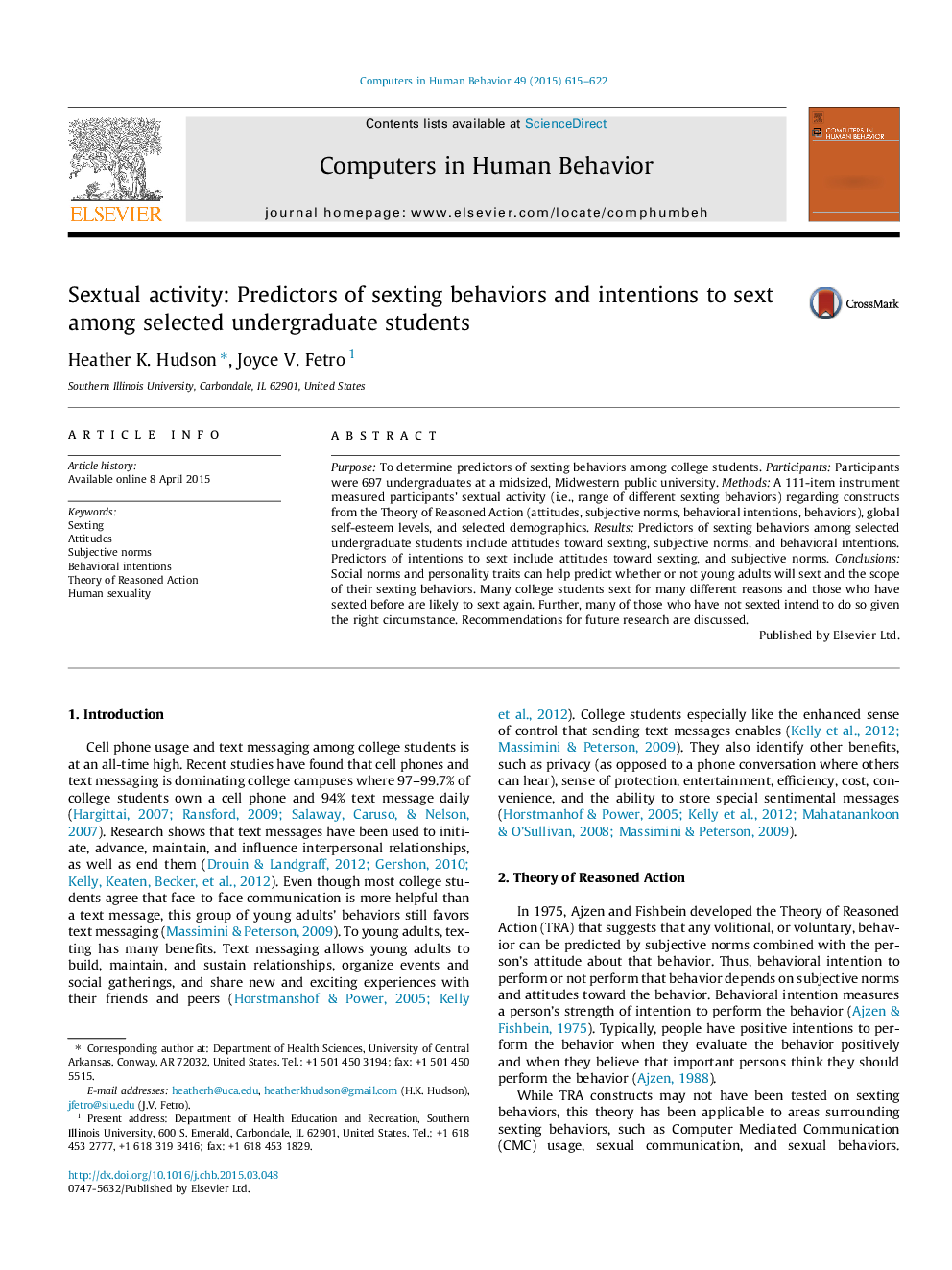| Article ID | Journal | Published Year | Pages | File Type |
|---|---|---|---|---|
| 350360 | Computers in Human Behavior | 2015 | 8 Pages |
•Ajzen’s TRA constructs were found as predictors of sexting behaviors and intentions.•Attitudes, subjective norms, and intentions were predictors of sexting behaviors.•Attitudes and subjective norms predicted sexting intentions among non-sexters.•Majority have previously sexted, and nearly half have sexted in the past 30 days.•Educators, health educators, and parents can use results to reduce risks of sexting.
Purpose: To determine predictors of sexting behaviors among college students. Participants: Participants were 697 undergraduates at a midsized, Midwestern public university. Methods: A 111-item instrument measured participants’ sextual activity (i.e., range of different sexting behaviors) regarding constructs from the Theory of Reasoned Action (attitudes, subjective norms, behavioral intentions, behaviors), global self-esteem levels, and selected demographics. Results: Predictors of sexting behaviors among selected undergraduate students include attitudes toward sexting, subjective norms, and behavioral intentions. Predictors of intentions to sext include attitudes toward sexting, and subjective norms. Conclusions: Social norms and personality traits can help predict whether or not young adults will sext and the scope of their sexting behaviors. Many college students sext for many different reasons and those who have sexted before are likely to sext again. Further, many of those who have not sexted intend to do so given the right circumstance. Recommendations for future research are discussed.
